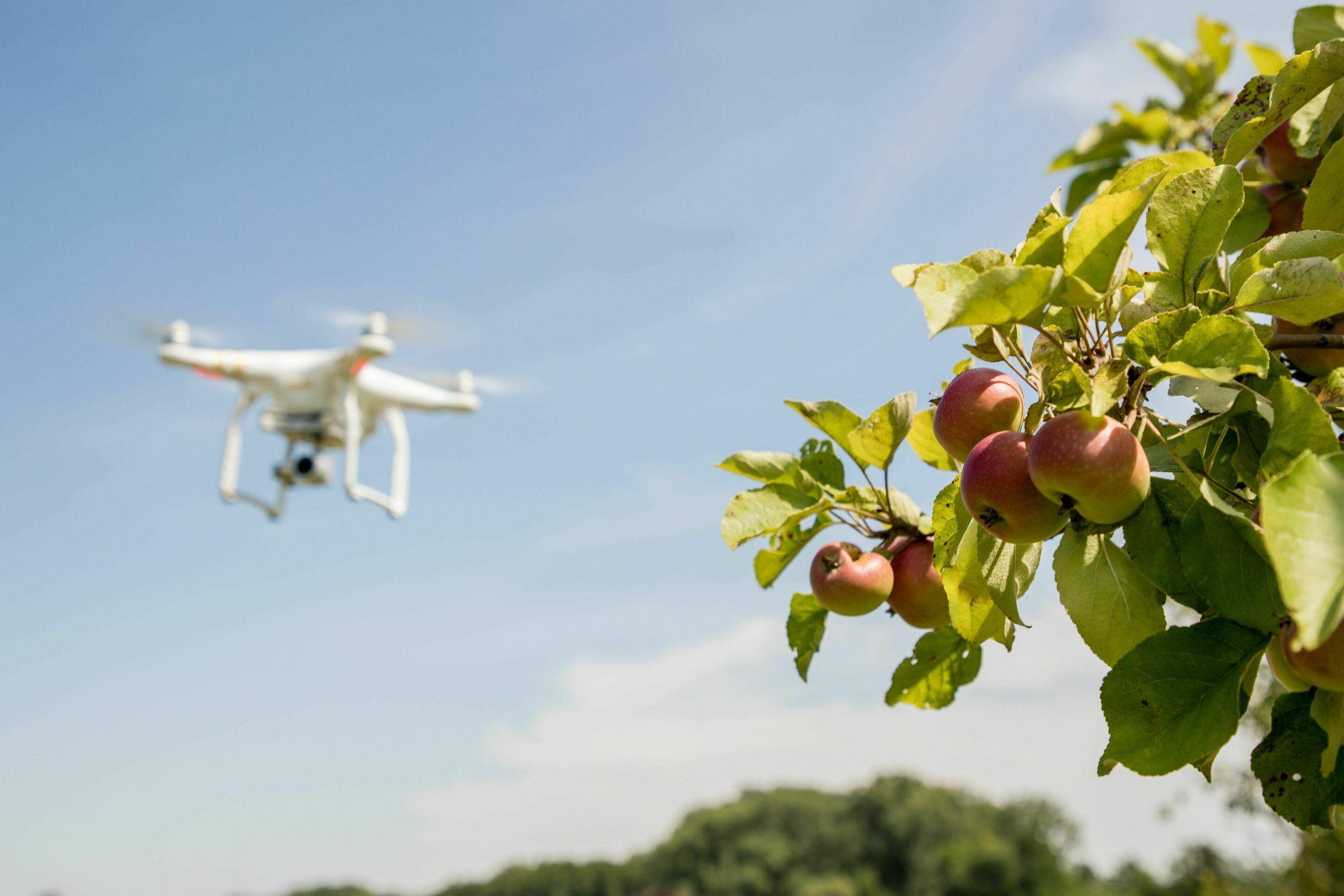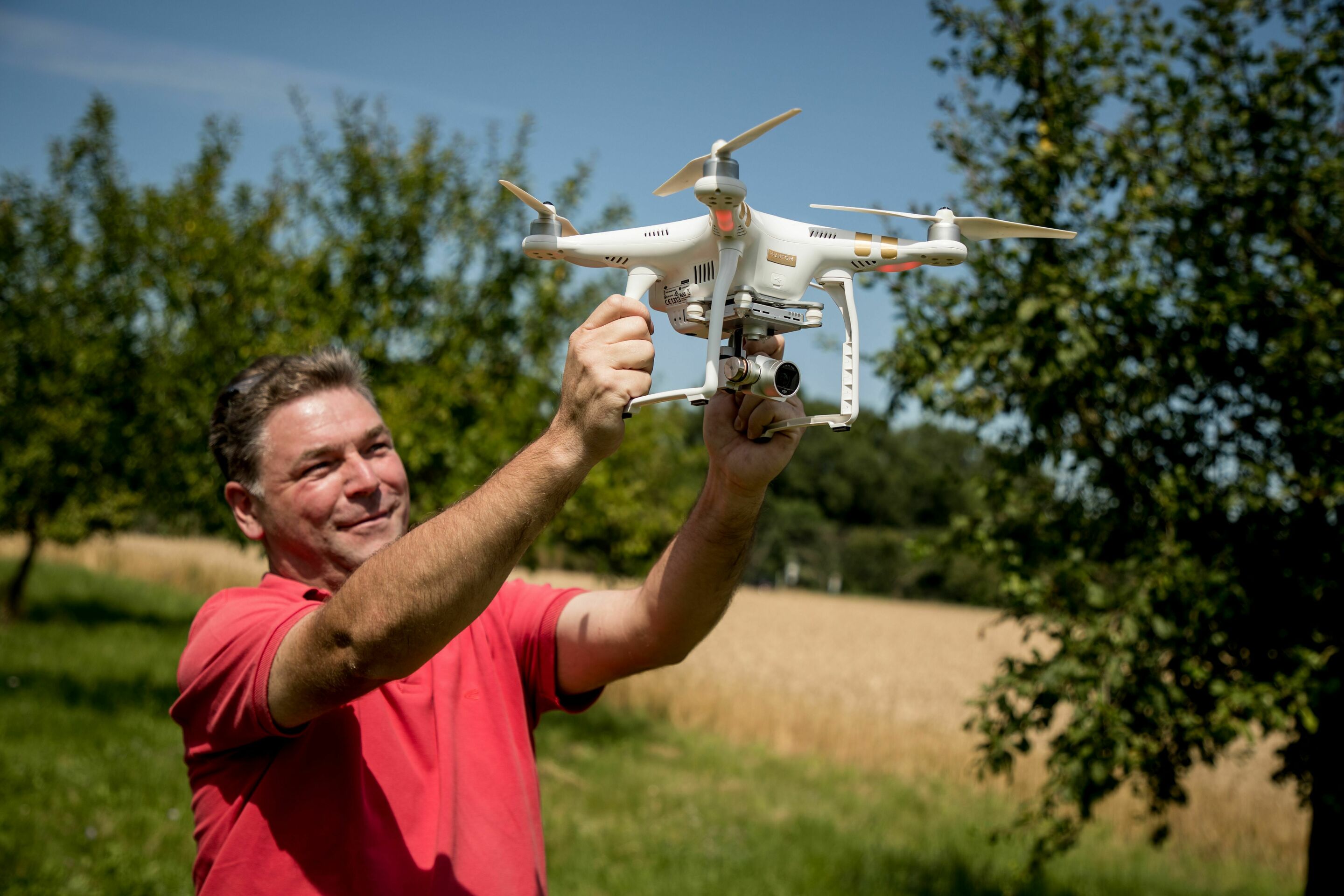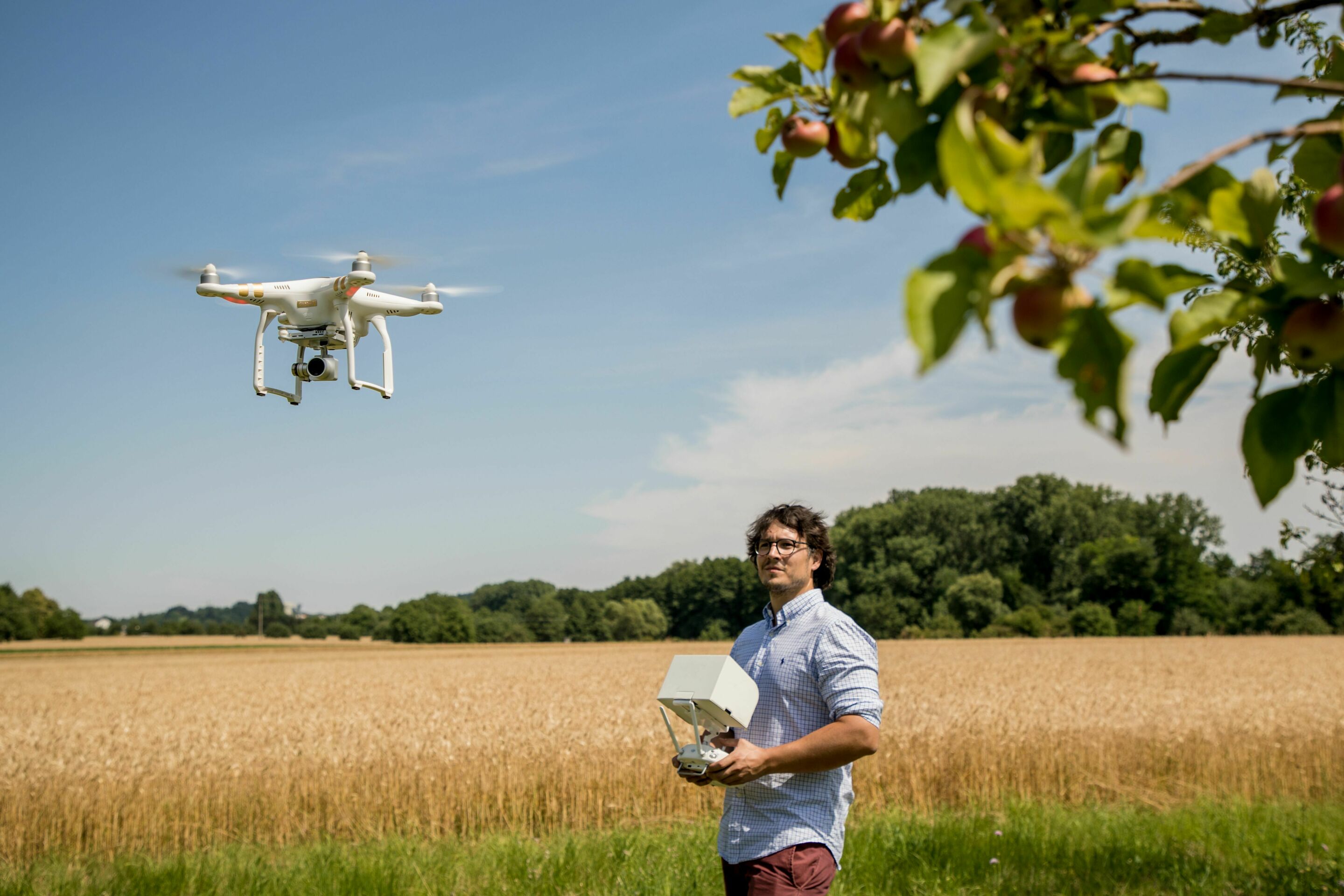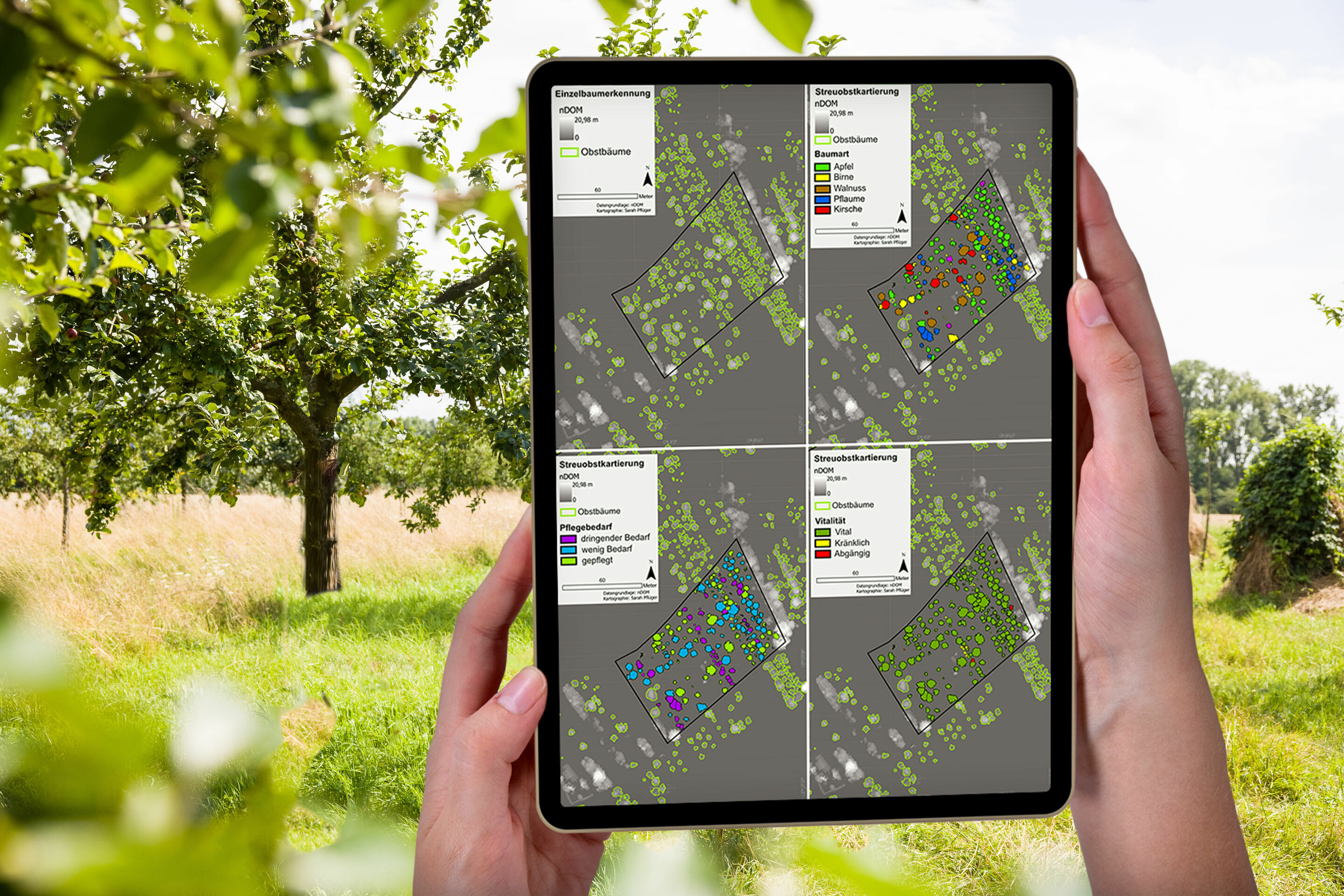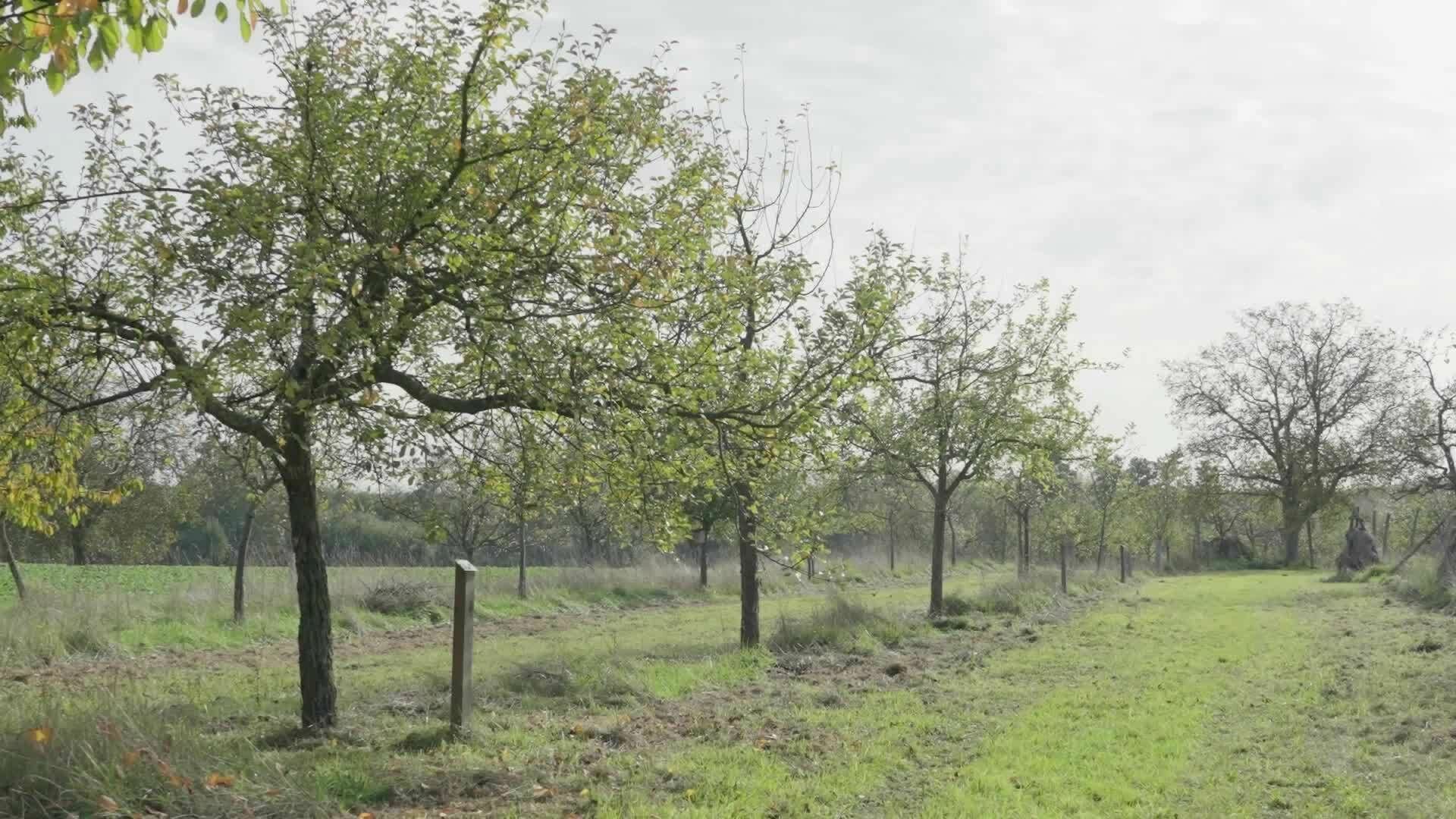Drones for environmental protection: monitoring of meadow orchards successfully completed
- “Recording, evaluating, and promoting awareness of meadow orchards”: research project safeguards long-term future of meadow orchards and protects biodiversity
- Drone and infrared images create meadow orchard register that allows private individuals to sponsor fruit trees
- Rüdiger Recknagel, Director of the Audi Environmental Foundation: “Project combines scientific expertise with personal engagement”
The project launched in the summer of 2018 – and now the results are being presented: Over the past three years, research drones from the Heidelberg University of Education repeatedly circled over the meadow orchards in the community of Bad Schönborn between Heidelberg and Karlsruhe. Covering an area of around 500 hectares, roughly ten hectares of which were meadow orchards, the drones carried out a comprehensive digital monitoring survey that automatically classified and evaluated the fruit trees. This involved categorizing the trees according to their state of health, such that targeted care measures can now be undertaken to improve their vitality. Private individuals are also encouraged to sponsor the care of fruit trees via a specially created platform. The Audi Environmental Foundation supported the project over its entire duration.
Protecting biodiversity through improved care of trees
In addition to the Audi Environmental Foundation and the Heidelberg University of Education, other contributors to the project include the Countryside Conservation Association for the Karlsruhe District and the Bad Schönborn Task Force for Local Nature and Environment (AHNU). Now the final results are available: Around 20 percent of the stock was found to be in urgent need of care, roughly half needed a lesser amount of care, and 28 percent needed no care. The meadow orchards are comprised of two-thirds apple trees, followed by pears, walnuts, plums, and cherries. This stock will now get the appropriate care, above all through regular pruning. And the benefits will not stop there: Improving the vitality of trees helps the long-term biodiversity of the landscape, safeguarding the habitat of domestic animals and insects.
Multispectral images for evaluating the intensity of photosynthesis
“The big challenge was the huge volume of data that we got back from the drones,” summarizes Alexander Siegmund, Professor of Physical Geography and head of the project team at the Heidelberg University of Education. “They took a picture every two seconds, which added up to about 120,000 images. Creating a valid general picture out of all this data required enormous computing power.” This was all the truer as the drone images were not the only information that had to be processed. Multispectral images taken from the air were also incorporated in the analysis, providing information about the intensity of photosynthesis in the trees. Background: Sick trees perform less photosynthesis and reflect light differently than healthy trees. But the visible structural characteristics of the trees – such as the treetop density, the proportion of deadwood, or the length of new shoots – were also factored into the assessment of the trees’ vitality. As the next step, measures will we derived from this information for the proper care of the trees.
Tree sponsorship via online database
What form will this care take? This is where the environmental education goals, which the project has been pursuing from the outset, come into play: With teaching concepts for schools and publication of the results, the project can raise a lot of awareness about this type of cultural landscape. Now it is encouraging people to get involved: As of immediately, every single citizen in the region can sponsor and care for fruit trees via a specially developed platform. An online mapping service was officially unveiled a short time ago. For anyone interested in the research results, it makes them available in the form of a web-based geographical information system (WebGIS) that also allows people to engage interactively with the content. Furthermore, landscape conservation institutions and government bodies can use the database.
Project promotes individual engagement and environmental education
Rüdiger Recknagel, Director of the Audi Environmental Foundation, emphasizes the comprehensive approach of the project: “The work of our foundation unites the use of modern technologies with a conservation mindset. This project combines scientific expertise with environmental education and individual engagement. The local people acquire new knowledge through active participation and derive personal satisfaction from harvesting the fruits of the trees they have sponsored. This creates a lasting awareness for habitat conservation and biodiversity.”
Project leader Siegmund adds: “For us, the meadow orchard project is a shining example in its optimal harnessing of various aspects of modern geotechnology for the conservation of this unique cultural landscape and the raising of public awareness. As UNESCO Chair on World Heritage and Biosphere Reserve Observation and Education, we were able to leverage our broad experience in environmental research and sustainability communication.”
